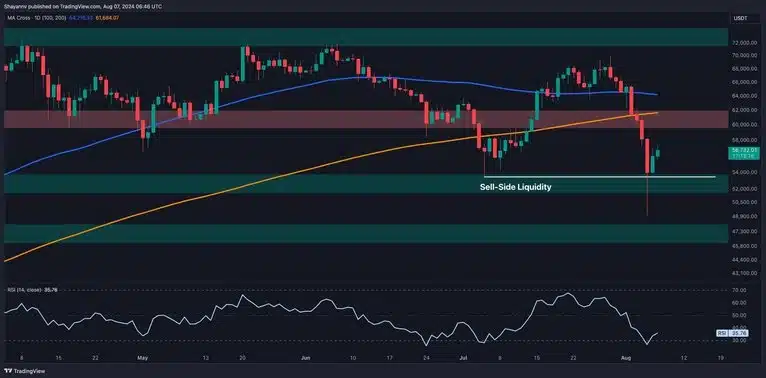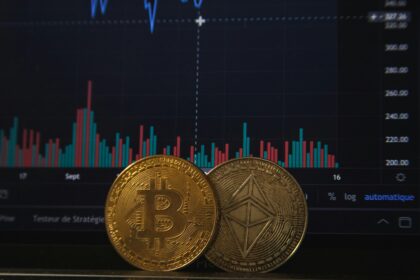The International Monetary Fund (IMF) and El Salvador have been making strides in discussions aimed at economic reform and addressing the risks associated with Bitcoin. As the first country to adopt Bitcoin as legal tender, El Salvador’s journey has been watched closely by the global community.

IMF Engages with El Salvador on Economic Policies
The IMF has been in talks with El Salvador for months, focusing on creating policies to address macroeconomic imbalances and enhance economic growth and resilience. On Tuesday, the IMF released a statement highlighting progress made in these discussions. The main goals of these negotiations are to strengthen public finances, boost bank reserves, improve governance and transparency, and mitigate Bitcoin risks.
Key agreements of El Salvador and IMF partnership include improving the primary fiscal balance by 3.5% of GDP over three years through fiscal consolidation, primarily by rationalizing the public wage bill while maintaining social and infrastructure spending. Strengthening financial system reserve buffers is also a priority, aimed at supporting private sector credit and growth, thus reducing reliance on domestic financing. Structural reforms will focus on enhancing governance, transparency, and the investment climate, with legislative proposals to tackle corruption, money laundering, and procurement weaknesses being prepared with international support.
Addressing Bitcoin Risks
Although many Bitcoin risks have not materialized for El Salvador and IMF authorities agree on the need for enhanced transparency and measures to ensure fiscal and financial stability. The IMF noted that further efforts are necessary to mitigate potential fiscal and financial stability risks from the Bitcoin project.
El Salvador made headlines in September 2021 by becoming the first country to adopt Bitcoin as legal tender. Since then, President Nayib Bukele’s government has maintained a strategy of purchasing one BTC daily. Revenue has been generated from Bitcoin through various initiatives, including passport and citizenship programs, converting fees, and mining operations. Additionally, El Salvador has eliminated income tax for international investments to attract foreign capital and further support its Bitcoin-based economy.
Bitcoin Price Analysis and Market Trends
The Bitcoin market has experienced significant fluctuations recently. After a major downturn, Bitcoin saw a sharp decline, breaking through key support levels. This price movement indicates a possible shift towards a bearish market structure.
A detailed examination of Bitcoin’s daily chart reveals a significant downturn driven by fears of potential economic turmoil. Increased selling pressure led to a sharp decline in BTC’s price, causing it to break below the 200-day moving average at $61.1K and its prior major swing low at $53K. This breakout is a strong bearish signal, suggesting a potential shift in market structure towards bearishness, marking a new lower low on the daily timeframe.

With perpetual markets cooling down and deleveraging, there is now a greater likelihood of a mid-term consolidation phase. In the coming days, Bitcoin’s price is expected to fluctuate between the $53K and $60K levels. On the 4-hour chart, the intensity of the sell-off is evident as Bitcoin’s price cascaded through several critical support zones. However, this sharp decline has effectively flushed out most of the long positions in the futures market, leading to a temporary halt in bearish momentum and causing a slight rebound.
Future Prospects and Market Sentiment
Bitcoin’s price has struggled to maintain its upward momentum recently, influenced by selling activity in perpetual markets and a long-squeeze event. The funding rates, a crucial metric for assessing sentiment in the futures market, have dropped sharply, indicating that the decline was driven by aggressive short selling and the liquidation of many long positions. The funding rates have now turned negative, reflecting an overall bearish sentiment and the dominance of short sellers.
However the partnership of El Salvador and IMF could also be seen as a positive sign, as it suggests the futures market is no longer overheated. This scenario could create conditions for a more sustainable bullish trend in the coming months, provided there are no drastic changes. Analysts are looking at key targets for a corrective phase, specifically between the 0.5 ($62K) and 0.618 ($59.5K) Fibonacci retracement levels. In the short term, Bitcoin is likely to remain within the $50K to $62K range, potentially consolidating sideways until the next significant move occurs.

Conclusion
El Salvador’s collaboration with the IMF highlights the importance of balancing innovative economic strategies with robust risk management. The focus on Bitcoin risk mitigation, combined with efforts to strengthen public finances and improve governance, demonstrates a commitment to ensuring fiscal and financial stability. As the global community continues to monitor these developments, the lessons learned from El Salvador’s experience could influence future Bitcoin adoption and regulatory approaches worldwide. Stay tuned for more updates on this evolving story on The Bit Journal





























